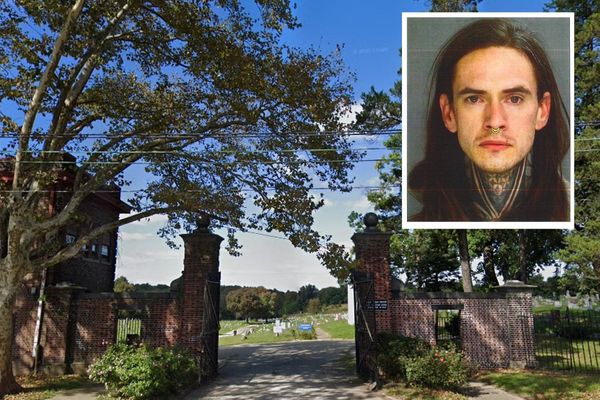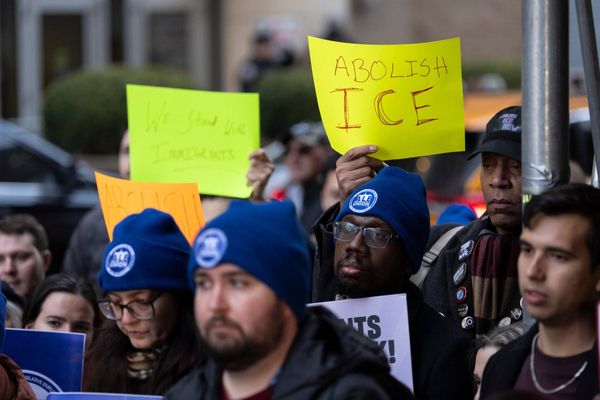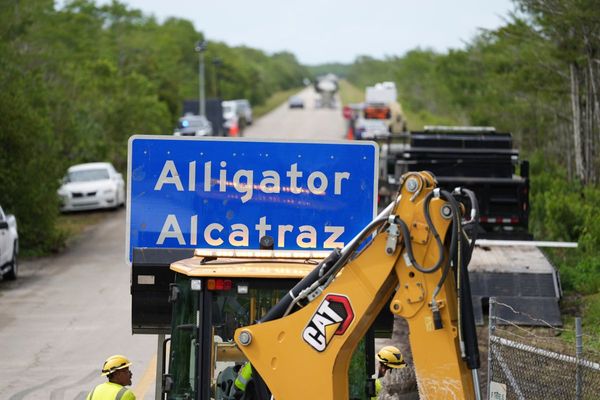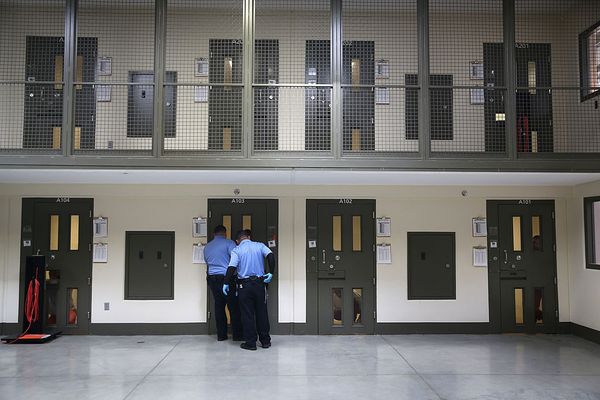LOOKING back now, there was so much optimism despite the obvious dangers and challenges the revolution had thrown up. From Benghazi in the east to the capital Tripoli in the west, most ordinary Libyans back in 2011 were simply glad to see the back of the old regime.
“This revolution is not a revolution of starving people or those who want money, this revolution is one of free souls, this revolution says we want freedom from Gaddafi,” I recall one young man called Mohammed Sallah, a 23-year-old medical student, telling me at the time.
From the very first day 12 years ago when the uprising against Colonel Muammar Gaddafi’s decades-long rule began, so many ordinary Libyans had taken to the streets prepared, if necessary, to forfeit their lives for the cause in which they so passionately believed.
“All my life I’ve worked on the oil rigs in the desert for little pay while Gaddafi makes a fortune,” Ahmed Rafa, a 42-year-old driver who had volunteered to join the rebels, told me.
In their filthy clothes, he and a group of other rebel fighters had made camp by the roadside in the desert west of Benghazi under a truck on top of which sat a huge rusting artillery cannon.
“I haven’t got a wife, haven’t got a house, I haven’t got a car and nothing in the bank because I’m paid so little, all of this I got from Gaddafi,” Ahmed Raza explained.
Back then during those heady days of the so-called Arab Spring uprising, those like Mohammed Sallah and Ahmed Raza, along with so many other Libyans, firmly believed their country was now destined for better, more peaceful, times.
In the 12 or so intervening years that have passed, however, Libya has never really been fully at peace. Across the country, chaos has gripped this vast oil-rich North African nation that has natural riches to rival the United Arab Emirates (UAE).
Throughout this process, time and again this country of almost seven million people has lurched from crisis to crisis, its citizens struggling to access basic services while a fractured and ever-feuding political elite has carved up the country into personal fiefdoms.
In that time too the chaos has enabled havens for Islamist militants and turned Libya’s long Mediterranean coast into a major point of departure for African and Middle Eastern refugees fleeing to Europe. Split and unstable, the threat of civil war has never been far away.
It was against this backdrop of widespread political and economic insecurity that last week on September 11, Storm Daniel swept across the Mediterranean Sea on a collision course with Libya, bringing with it torrential rains and ferocious winds dumping as much as one metre of rainfall in a single day – two to three times more than the region sees in a typical year.
In the ensuing deluge, two massive dams holding back the river in the hills above the city of Derna, a coastal city in northeastern Libya burst, sending an estimated 30 million cubic metres of water down a valley that runs through the city’s centre – wiping out entire neighbourhoods in this port city of 100,000, famous for its beautiful gardens, canals, bananas and pomegranates.
“This disaster was violent and brutal,” said Yann Fridez, head of the Libya delegation of the International Committee of the Red Cross (ICRC), which had a team in Derna when the floodwaters hit.
“A wave 23 feet high wiped out buildings and washed infrastructure into the sea. Now family members are missing, dead bodies are washing back up on shore, and homes are destroyed,” Fridez told broadcaster Al-Jazeera.
At the time of writing, the death toll has soared to 11,300 people with another 10,100 people still reported missing according to the International Federation of Red Cross and Red Crescent Societies. The death toll, authorities say, could double in the days ahead. The storm also killed about 170 people elsewhere in the country.
By last Thursday morning more than 3000 bodies had been buried while another 2000 were still being processed. Most of the dead were buried in mass graves outside Derna, while others were transferred to nearby towns and cities. Meanwhile, the International Red Cross was distributing 6000 body bags to help authorities and the Libyan Red Crescent Society “ensure dignified treatment of the dead”.
Aid groups have warned of the growing risk posed by the spread of disease that could compound the humanitarian crisis as hopes of finding more survivors fade days after the deadly flooding.
For those who did survive, the struggle to pick up their lives will be immense with an estimated 38,000 residents having been displaced. But even as the focus rightly continues to be on responding to the humanitarian crisis, observers both inside and outside Libya say the disaster has become emblematic of the country’s woes. This, insist many, is a product not simply of a natural disaster but a long period of political division and ineffective governance.
Even in the wake of the disaster, those divisions were evident in a country that is governed by a western administration based in Tripoli and a rival authority based in the east that oversees Derna, among other cities.
While the west of the country is run by the internationally recognised Government of National Unity; the east, including Derna, falls under the rule of the renegade strongman general Khalifa Haftar and his Libyan National Army (LNA) who have militarily controlled the east for a decade supported in recent years by Russian fighters from the Wagner Group. Dozens of other armed groups also wield power.
While the rival authorities in the east and west of Libya seem to be working together to some extent on the search and rescue efforts after the floods, their different political takes are still glaringly apparent.
Responding to the disaster, Prime Minister Abdulhamid al-Dbeibah, head of the government in Tripoli, blamed negligence, political divisions, war, and “lost money” for uncompleted work on the dams, but in the rival eastern-based parliament in Benghazi there was a different interpretation, where speaker Aguila Saleh sought to deflect blame from authorities.
Saleh and other officials told Libyans that no one was to blame. “God wills and acts. Don’t say ‘if only we’d done this or that’,” he told an emergency session of parliament. “What happened in our country was a natural catastrophe.”
Another official, Ahmed Al-Mismari, spokesperson for the warlord Haftar, said the disaster was “completely unexpected”, despite meteorological warnings of possible floods that were issued before the storm made landfall. “It happens in all countries,” he added at a press conference.
But as North African analysts point out Libya is not like other countries. By way of an example, some say the authorities had ample warning about Daniel, which poured torrential rains on Greece almost a week before it hit Libya.
In fact, as far back as 17 years ago, the dangers facing residents from the impact of such a storm on the dams in Derna were already no secret, according to some.
“When I gathered the data, I found a number of problems in the Derna Valley – in the cracks present in the dams, the amount of rainfall and repeated floods,” hydrologist Abdul Wanis Ashour told Reuters news agency of his time 17 years ago when he began researching the system of dams protecting Derna.
“I found also a number of reports warning of a disaster taking place in the Derna Valley basin if the dams were not maintained,” added Ashour, who warned of the “catastrophe” in the pages of the Sebha University Journal of Pure & Applied Sciences published last year.
“There were warnings before that. The state knew of this well, whether through experts in the Public Water Commission or the foreign companies that came to assess the dam,” he said. “The Libyan government knew what was going on in the Derna River Valley and the danger of the situation for a very long time.”
As late as last week, just before Daniel struck, those warnings were being reiterated. As the storm neared Derna, the mayor reportedly asked Haftar, to help evacuate the city and is said to have been ignored. Even as waters rose behind the doomed dams, no one was told to flee.
Experts say Derna itself has a particular history of neglect. Even in Gaddafi’s time before his overthrow back in 2011, Derna was always viewed as a hotbed of Islamism and the dictator was happy enough for Derna’s residents to fight in Iraq or Afghanistan. But after Gaddafi was deposed, the Islamic State (IS) group conquered parts of the city in 2014 before it in turn was pushed out by other Islamist rivals.
Again in turn, warlord Haftar, a strong opponent of the Islamists, laid siege to Derna to root out these groups and starving its residents before the city fell under his control in 2018 and 2019. Today in the wake of the flood disaster, some Libyan commentators, according to The Economist magazine, suspect Haftar was not unhappy to see Derna submerged.
Speaking to the Financial Times last week, Jalel Harchaoui, an associate fellow at the Royal United Services Institute (RUSI) for defence and security studies, said: “Derna was despised and marginalised … everybody was ignoring it. The only hospital in Derna, a city of 100,000, was … a makeshift hospital that was effectively just a house after years of suffering, and that was before the tragedy.”
Given such challenges and as the rescue and humanitarian effort continues, there were calls yesterday for a complete evacuation of Derna. A spokesperson for one aid organisation, however, said that trying to coordinate operations there was “a nightmare”, with political divisions threatening at almost every turn to complicate and hinder the emergency response and recovery efforts.
“You still have something like 140 government institutions that are divided between the east and west, so you can just imagine how difficult it’s going to be to have what is clearly going to need to be a wide-ranging response,” Tim Eaton, a Libya expert at Chatham House was cited by the Financial Times as saying.
Back in 2011, when I was covering Libya’s revolution to oust Gaddafi during the Arab Spring, Derna locals – along with people in the neighbouring coastal city of Benghazi about 217 miles to the west – were some of the first Libyans to demonstrate against the country’s 42-year dictatorship.
That the city’s revolutionary reputation was also shaped by individuals who favoured more rigid forms of Islam meant that it almost inevitably incurred the wrath of both Gaddafi and later general Haftar. Both men, ruthless in politics and battle, in turn brutalised the residents of Derna and Benghazi with neglect part of that process. While throughout its history Derna has been feared, it has also been revered as a centre of intellectualism, culture and art.
Today, it will also be remembered for another reason, the scene of a disaster that says so much about the impact of climate change as well as Libya’s divisive politics.
Almost a week on from the flooding, the recriminations are being felt across a country that has endured more than a decade of chaos and conflict.
Looking back on the revolution of 2011 and what for many Libyans was – briefly at least – a time of optimism, it’s hard to imagine that all these years later the remaining chapters of that turmoil are still playing out and Derna once again sits at the epicentre of Libya’s pain and suffering.







